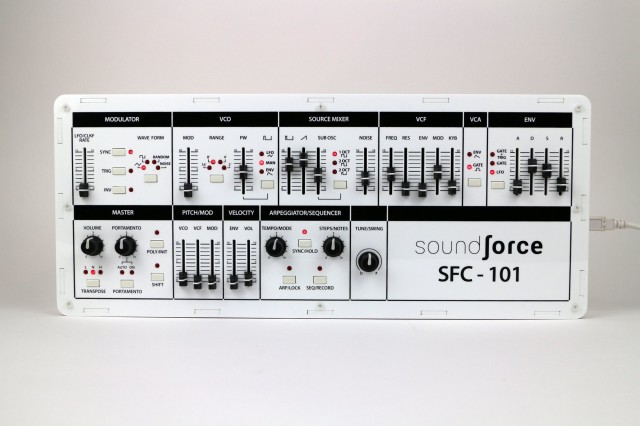What’s an ‘app’?
For years, it was an uphill battle just getting people to recognize the ability of computers to generate sounds. When Native Instruments was founded in Berlin in 1996, their name was a clue to where they imagined the future going. Propellerhead’s release of ReBirth in 1997 began a concerted effort by the Stockholm-based company to campaign for in-the-box emulations of gear – and their partner Steinberg would shortly thereafter push ReWire and its own VST.
Now, it’s not so much the app as the map – the physical control given to software. Whatever analog versus digital debates may rage on forums, the reality in the marketplace is now an ample combination of both technologies. That means a lot of standalone hardware can be thought of as just another computer. Drum machines and synths have computers inside. Roland sells its SYSTEM-1 instruments in both computer plug-in and hardware form. Eurorack modules, in the very bastion of analog love, now include computation (and even now monome and SoundHack modules). And on the software side, a growing number of tools from Native Instruments, Ableton, Arturia, and so on combine hardware with software.
Even on mobile, we’re seeing crossover. In some cases, tablet and phone touchscreens augment physical gear. In others, you’re connecting additional physical controls to your iPad instead of your laptop.
Seen this week, the SFC-Mini is just a prototype, made in quantity two. But it’s been interesting to watch this spread online, even in these summer music gear doldrums. The clever thing about the SFC-Mini is that it doesn’t have to be a generic controller: there are now so many Minimoog emulations that having hardware simply copy the classic Moog control layout is a no-brainer. It’s mapped already to the Arturia Mini-V and my go-to favorite monosynth of the moment, the NI Monark. But it could be used with any synth with a similar architecture.
Dutch custom builder Sound Force has more of these. For SH-101 fans, there’s the SFC-101. What’s interesting about this is that you get something more closely tailored to the SH-101 than ever Roland offers – because the AIRA SYSTEM-1 has a more generic layout. And you get arguably better sound, because while the TAL-BassLine-101 is a CPU-hungry computer plug-in, it does sound great.
There’s also the SFC-60, a dedicated controller for the TAL U-NO-LX. The best feature here: an integrated step sequencer. Watch:
Designers I believe are going to have some choices to make ahead. Do you lean on the powerful computational abilities of laptops people already own? Do you turn to increasingly versatile DSP platforms? What about faster, cheaper, more power stingy embedded computation platforms? Or, for that matter, when is analog circuitry actually still a better solution?
Those choices may ultimately be relatively invisible to the user. But one choice that can’t go ignored is how to make hardware control work. Humans have indeed developed opposable thumbs, and faders and knobs have endured long past their analog necessity partly because they seem to work really well with our hands.
So that could mean designing your own hardware, or at least make mapping to faders and knobs people already own easier.
But it’s impossible not to recall this quote from visionary computer scientist Alan Kay – one of the key people who defined how we think about the graphical user interface, object oriented programming, and how to teach computing:
“People who are really serious about software should make their own hardware.”
More and more music tool makers seem to be taking that idea to heart.
That quote is indeed so often quoted in tech circles that I suspect a lot of people have no clue where it came from. Apple Macintosh pioneer Andy Hertzfeld tells the story:
Creative Think, July 1982 [folklore.org]
Not coincidentally, one of Kay’s favorite metaphors for defining how computers should relate to the human, and one apparently brought up at that speach: the computer as musical instrument.
This is I expect also relevant to electronic musical instrument makers: “it’s all software, it just depends on when you crystallize it.”
It’s a shame we don’t have the original talk, but it seems it influenced the development of the Mac – and thus the GUI as we use it today.
Anyway, while I ponder more philosophical ideas, you can browse the lovely custom stuff at Sound Force – and buy it, if you like. The SFC-Mini isn’t here yet, but I might have to get one. In the meantime, the SFC-60 is just 249€, which I find impressive for something made in this way.
Congrats to one-man operation Nicolas Toussaint.
